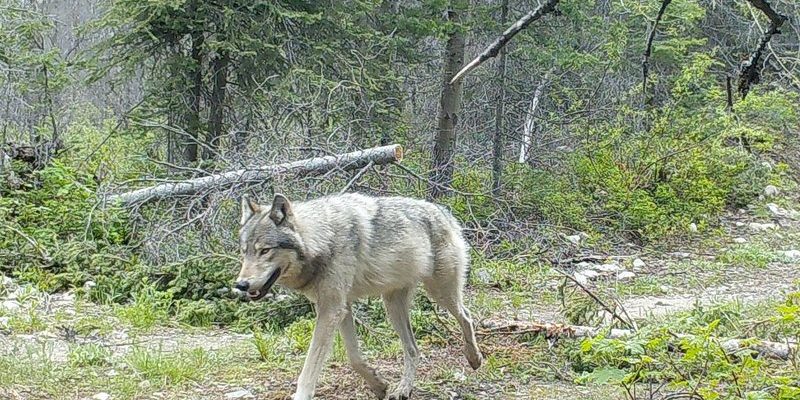
So, what exactly is a wolf worm? These little critters, scientifically known as *Pseudochelidon* larvae, are found in various regions and serve as an essential piece in the puzzle of their ecosystems. Instead of focusing on drastic measures like eradication or harm, researchers are taking a look at non-lethal ways to understand the wolf worm’s role in wildlife health and population dynamics. This approach is not only gentler on the ecosystem but also opens up avenues for understanding biodiversity better.
Let’s dive in and explore the non-lethal studies on wolf worms! We’ll discuss their role, their interactions with various wildlife, and what researchers are discovering about this fascinating creature.
Understanding Wolf Worms: The Basics
To get started, let’s dig a little deeper into what wolf worms are. These parasitic larvae typically develop inside the bodies of their host animals, often birds. You might be thinking, “Wait, that sounds harmful!” And while it can affect the host, researchers are finding that the relationship isn’t always detrimental.
Wolf worms often exist in a delicate balance with their hosts. For instance, they can influence the host’s behavior and health, but they don’t always lead to death. Instead, these interactions can contribute to natural selection processes, impacting which individuals survive and reproduce. The more researchers learn about these dynamics, the better they can assess the overall health of wildlife populations.
Observing wolf worms in a non-lethal context means that scientists can study things like host behavior, reproduction rates, and overall population health without causing harm. This method prioritizes the well-being of wildlife, allowing us to gather valuable data on how these organisms coexist.
The Role of Non-Lethal Research
Now that we understand the basics of wolf worms, let’s explore why non-lethal research is crucial. Imagine trying to solve a mystery without all the clues—you might make assumptions that lead you astray. The same goes for wildlife research. Non-lethal studies help researchers gather accurate data without skewing results through harmful practices.
By employing techniques like observation, tagging, and tracking, scientists can monitor wolf worm interactions with their hosts. For example, they can study how the presence of wolf worms impacts a bird’s migratory patterns or feeding habits. Knowing this helps in conservation efforts, as it reveals the complexities of the predator-prey relationship and ecological balance.
>
Non-lethal research allows for a detailed understanding of wildlife interactions, promoting conservation without causing harm.
Furthermore, this type of research fosters a more ethical approach to studying wildlife. It respects the integrity of animal populations while still advancing our understanding of biodiversity. In a world where humans often disrupt natural habitats, this gentle approach is refreshing.
Impact on Host Wildlife
How exactly do wolf worms impact their host species? Well, it’s a bit of a mixed bag. While the presence of wolf worms can lead to some health issues in infected hosts, it’s not always a straightforward case of harm. For example, infected birds may display changes in behavior—sometimes becoming more cautious or even altering their feeding patterns.
This shift can create a ripple effect in the ecosystem. When birds change their feeding habits, it can influence the populations of insects and plants they typically consume. So even if wolf worms are not directly killing their hosts, they are part of a larger equation, subtly nudging the balance of the ecosystem one way or another.
Researchers have found that understanding these dynamics can play a critical role in wildlife management. By figuring out how wolf worms affect their hosts and what that means for the ecosystem, we can better protect and conserve various species.
Studying Wolf Worms in Different Environments
Wolf worms are found in diverse environments, from forests to grasslands. Each habitat presents unique challenges and opportunities for research. For instance, a study in a forest might reveal different impacts on host species than one conducted in an open grassland.
In forested environments, wolf worms may interact with various bird species, such as songbirds or woodpeckers. Researchers can observe how these interactions affect nesting behaviors or food availability. Conversely, in grasslands, the focus might shift to how larger bird populations, like raptors, are influenced by wolf worm presence.
>
The environment plays a significant role in determining the effects of wolf worms on wildlife.
By studying wolf worms in different settings, scientists can gain a more comprehensive understanding of their ecological roles. These comparisons also help highlight the adaptability of species and how they cope with challenges imposed by parasites like wolf worms.
Case Studies: Insights From Non-Lethal Research
Let’s take a look at some specific case studies that illustrate the findings from non-lethal research on wolf worms. In one study, researchers focused on a population of songbirds in a temperate forest. By tracking the birds over multiple seasons, they discovered that those with wolf worms showed slight variations in nesting success compared to those that were uninfected.
Interestingly, the infected birds also displayed different foraging behaviors, leading researchers to conclude that wolf worms could indirectly affect food resources in the area. This kind of insight is vital for designing effective conservation strategies, as it underscores the importance of considering all factors in wildlife management.
Another study examined raptors in an open grassland ecosystem. The researchers found that wolf worm prevalence in smaller bird populations, which serve as prey for the raptors, influenced hunting success rates. Infected prey were less agile, making them easier targets. This finding emphasizes the interconnectedness of the food web and the critical role that wolf worms play—often without any direct lethality.
Conservation Implications
Understanding the impact of wolf worms on wildlife has significant conservation implications. The results of non-lethal studies can inform management strategies aimed at preserving both host species and their ecosystems. By recognizing the role of wolf worms, conservationists can develop more targeted approaches that consider the complex relationships within ecosystems.
For example, if researchers identify a specific host species severely affected by wolf worms, they can prioritize habitat protections or monitoring efforts. This proactive approach can help maintain healthy wildlife populations while minimizing the risk of disease transmission and population decline.
Moreover, awareness of wolf worms’ ecological impacts can improve public understanding of wildlife dynamics. Educating the community about these organisms fosters respect for all species, not just those widely regarded as “charismatic.” When people understand the significance of wolf worms, they may become more engaged in conservation efforts.
Future Directions in Wolf Worm Research
As researchers continue to explore the impact of wolf worms on wildlife, the future looks bright for non-lethal studies. New technologies, such as satellite tracking and genetic analysis, offer exciting possibilities for understanding these interactions in even greater detail. Researchers are likely to expand their focus beyond birds, examining other potential host species and the broader ecological effects wolf worms may have.
Additionally, collaboration among researchers, conservationists, and local communities can enhance study outcomes. By working together, they can pool resources, share knowledge, and create more robust research frameworks. This collaborative spirit could uncover further insights into the complexities of ecosystems and how organisms, like wolf worms, fit into the grand picture.
Ultimately, the ongoing study of wolf worms serves as a reminder of the intricate relationships that define our natural world. The approach of non-lethal research not only deepens our understanding of these fascinating organisms but also highlights the need for compassionate and thoughtful engagement with wildlife.
In closing, wolf worms may be small, but their impact is vast. Through non-lethal studies, researchers are uncovering the nuanced ways these creatures affect wildlife. By prioritizing harmony over harm, we pave the way for healthier ecosystems and a better understanding of biodiversity. Let’s continue to support these efforts, fostering knowledge and respect for all the interconnected threads in nature’s web.

